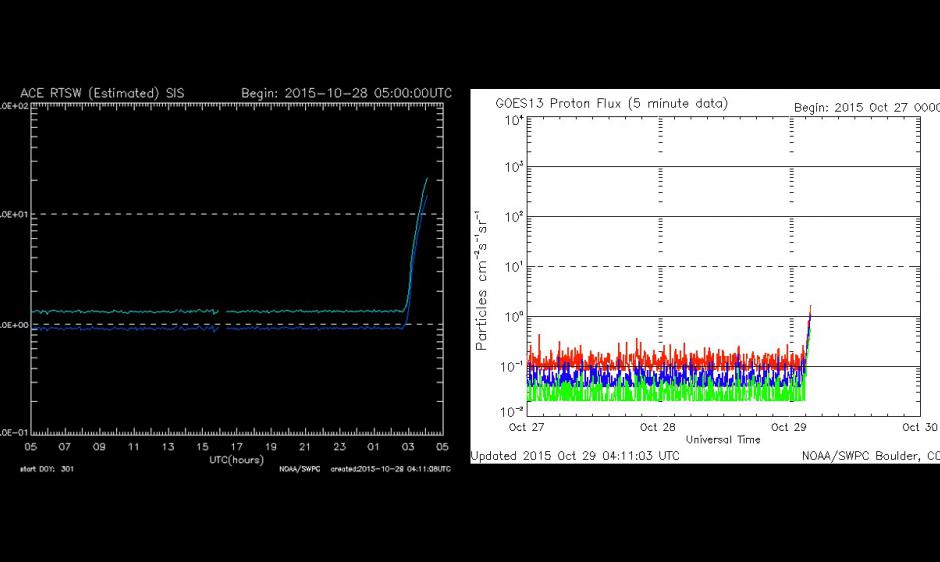
An S1 (Minor Solar Radiation Storm) Warning was issued at 29/0347 UTC due to a rise in 10 MeV protons as noted on the ACE Solar Isotope Spectrometer (SIS) instrument and the beginning of a rise in the 10 MeV flux at the GOES satellite. The S1 Warning for 10 MeV proton flux at or above 10 pfu is valid from 29/0430 UTC until 29/1700 UTC. Additionally, a warning was also issued for the 100 MeV proton flux at or above 1 pfu and is valid from 29/0445 UTC until 29/1400 UTC. This activity is a result of a coronal mass ejection (CME) that occurred from just beyond the SW limb of the Sun at around 29/0219 UTC; as noted by radio signatures known as Type II and Type IV sweeps. Locations at and just beyond the western limb are prime locations for a magnetic field line connection to Earth for energetic protons to travel at near relativistic speeds and therefore, reach Earth within 30 minutes to a few hours. Impacts due to an S1 event may include minor impacts on HF radio in the polar regions.